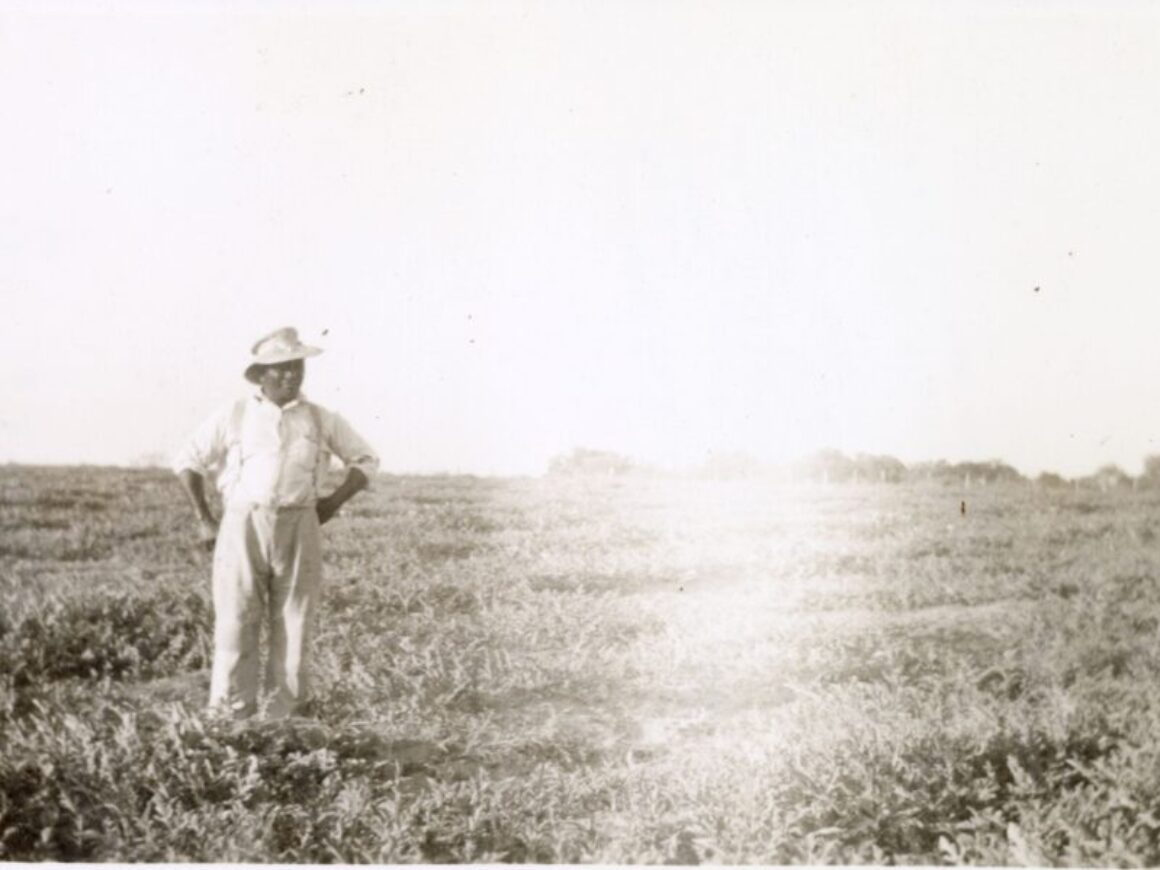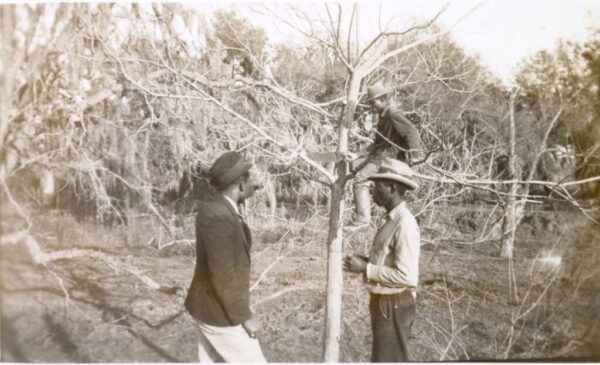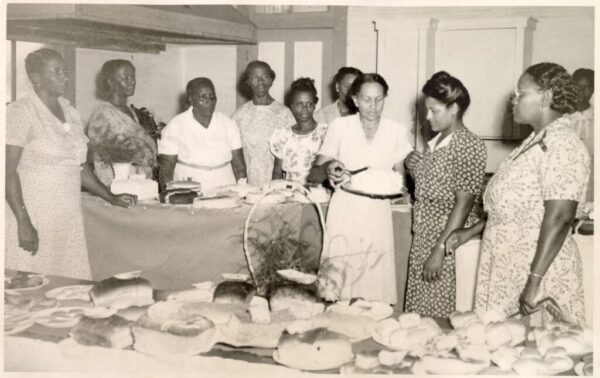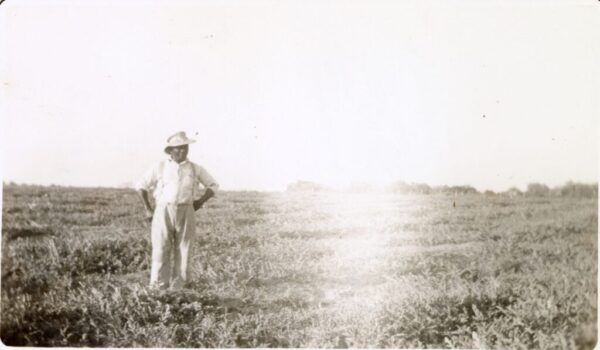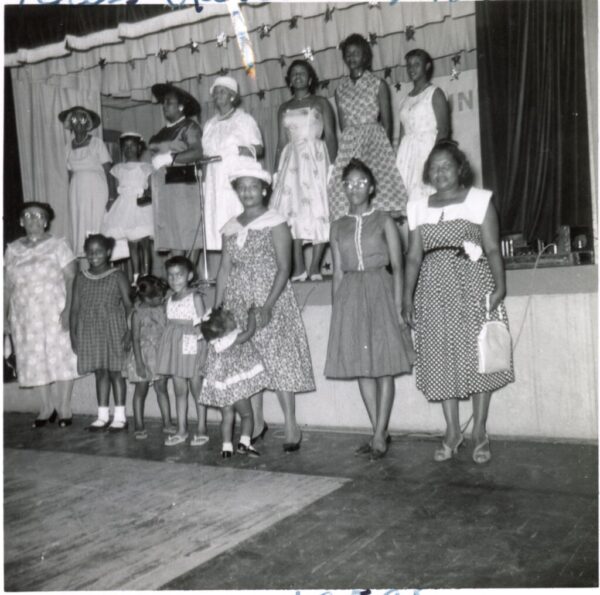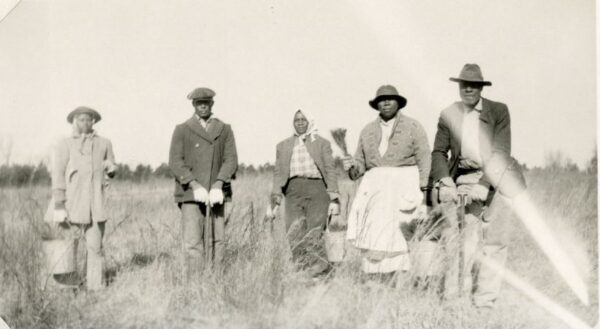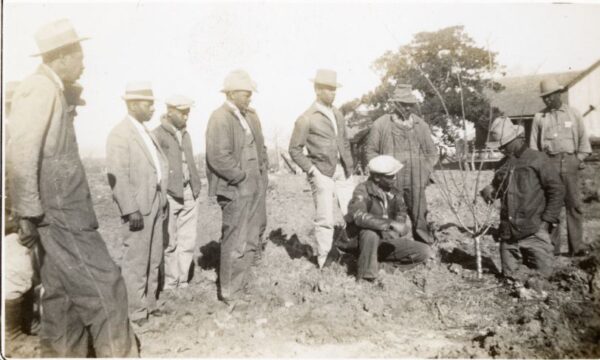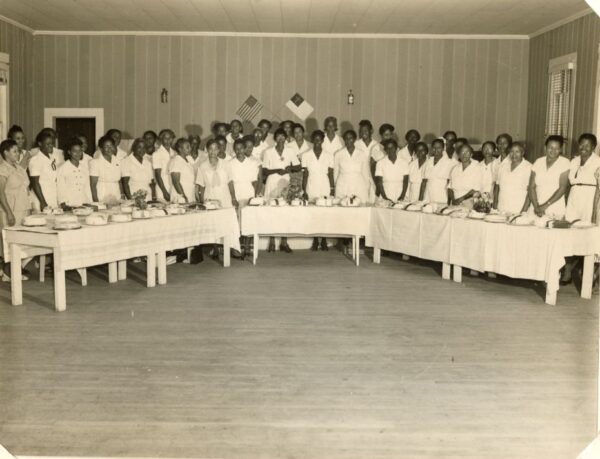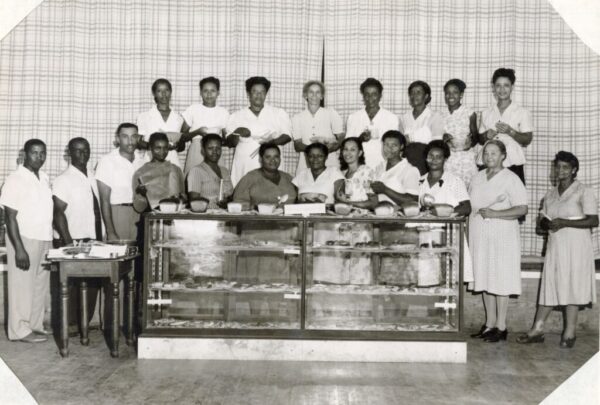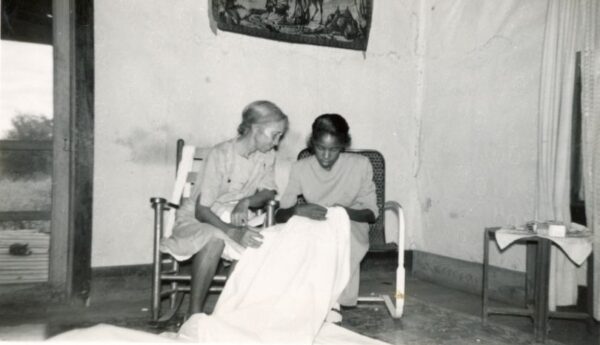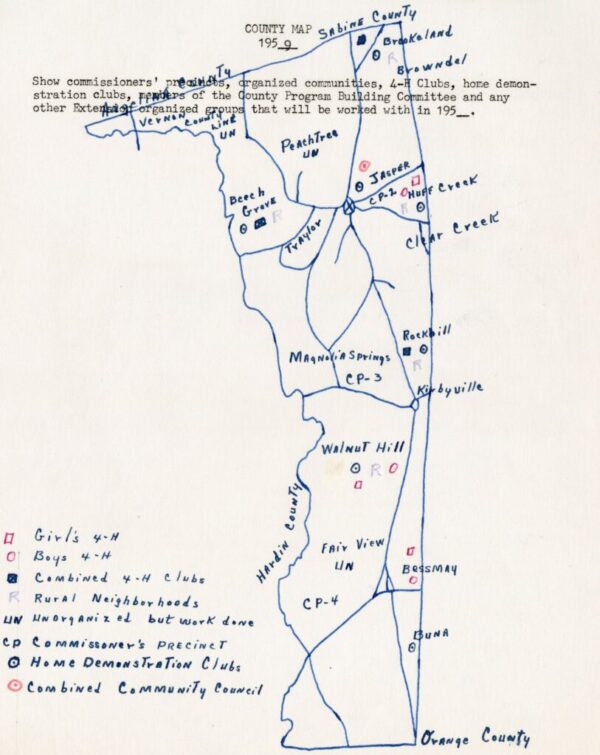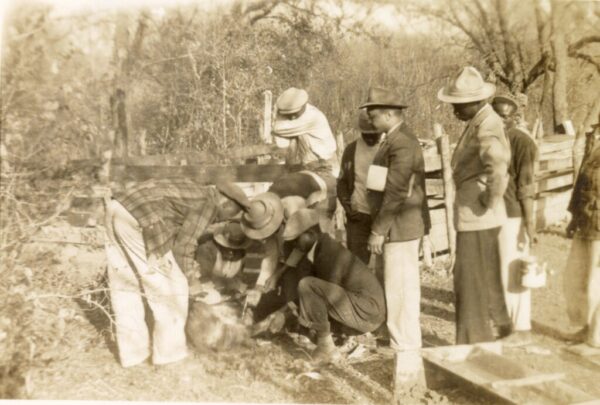Summer RISE with the Digital PV Panther Project
Summer RISE with the Digital PV Panther Project
By Evelyn Kay Todd
Above: Richard Jackson standing in his melon field in the Sunny Side community, Waller County, 1937 [Courtesy of the Cooperative Extension & Home Demonstration Collection, the Special Collections & Archives Department, John B. Coleman Library, Prairie View A&M University]
In June, the PVAMU Division of Research & Innovation provided me funding through the RISE program, and Assistant Professor of History DeWayne Moore gave me the opportunity to join the Digital PV Panther Project (DPPP) team! I had found out about the project through social media, when I began to pay attention to their Twitter posts. When I read the blog post of Malachi McMahon about the 1971 student uprising at PVAMU, I sent it to my family in shock. I learned that my mother and grandparents lived in Prairie View at that time while my grandfather attended the university. I had always known that my family had history with PVAMU, as I am a 3rd Generation PVAMU Alumnus, but I did not know how deep it ran. (I will tell you more about that in a different post.) Excited about the DPPP, I reached out to the team to share some of my family history, and I asked about how I might contribute to the project. Soon after, I was invited to join the DPPP team as a Graduate Research Assistant through the RISE Program.
What I Accomplished this Summer
I started to work in June 2023. For the first month, I focused on scanning documents, and I digitized and processed 154 archival folders from four counties using a CZUR Document Scanner from the Cooperative Extension & Home Demonstration Collection. Following the archival processing system implemented by DPPP team prior to my arrival, I picked up where the students before me left off. Each one of the grey archival document boxes contains numerous acid-free folders filled with documents, maps, reports, and correspondence from Cooperative Extension agents. Using the metadata written on each folder, I created names for each of the digitized documents in the CZUR Scanner system, and then, I would determine the appropriate settings to scan the documents. At the end of the day, once I had scanned all the documents in the folders, I copied them from the hard drive to the cloud in Microsoft Teams. The shared drive provides the team access to the digitized documents.
Texas Counties in the CE&HD Collection
Documents digitized and processed:
1. Matagorda County – Box 1, Box 2 (55 folders total)
2. Montgomery County – Box 1, Box 2 (63 folders total)
3. Nacogdoches County – Box 1 (6 folders total)
4. San Jacinto County – Box 1 (30 folders total)
![UA0035_Bowie_b2f2_1959MonthlyReports_Todd0010 4-H Club Dress Revue Models in 1959 Bowie County [Courtesy of the Cooperative Extension & Home Demonstration Collection, the Special Collections & Archives Department, John B. Coleman Library, Prairie View A&M University]](https://pvpantherproject.com/wp-content/uploads/2023/08/UA0035_Bowie_b2f2_1959MonthlyReports_Todd0010-scaled.jpg)
Proudly, I learned new skills on the DPPP. I had no idea that archival processing required specific tools for removing old paperclips and staples from documents, but it proved crucial to avoid tearing the often brittle old documents dating back the 1920s. I also discovered a host of misplaced documents, which had belonged in other boxes. As a student who appreciates an efficient research process, I made sure to bring the errors to the attention of Dr. Moore, and I kept an eye out for anything that might seem out of place.
About halfway through the summer, Dr. Moore decided to switch it up a bit, and I got to change my focus from document scanning to photographs. In the Fall semester, we plan to curate digital touchscreen exhibitions and display them on our new 86″ and 66″ touchscreen displays. Thus, I started using the Epson 12000XL flatbed scanner to scan all the maps, photographs, and newspaper articles from various counties in the CE&HD Collection. As of August 3, I have digitized almost 300 items from thirteen different counties. In addition, I created a spreadsheet in Microsoft Excel and recorded the metadata about each item–name, location, date, and other information. The CZUR Document scanner looks very different than the Epson 12000XL, but each of them requires a similar settings process. The Epson, however, allows me to preview my scans and create boxes around each item on the scanner bed. I have scanned, for example, up to eight photographs at once using the Epson. It’s a efficient feature, because it allows me to scan the photographs while I enter the metadata in the spreadsheet. At the end of each day, once again, I uploaded the digital images to the cloud in Microsoft Teams. Not only does this provide the team access the images, but it also provides redundant storage in case the computer hard drive fails.
As the summer comes to an end, I stopped scanning photographs long enough to write this blog post. With funding from the RISE program, Dr. Moore and I moved forward historic preservation in the library. We intend to share the digitized documents, photographs, and maps on the DPPP website as well as the library’s Digital Commons, and I look forward to sharing more updates about our work on the DPPP. Our efforts to digitally preserve the Cooperative Extension & Home Demonstration Collection is vitally important to the university. The PVAMU archives contain other rich manuscript collections that detail the institutional history of PVAMU, and I look forward to building upon our success this summer!
—
